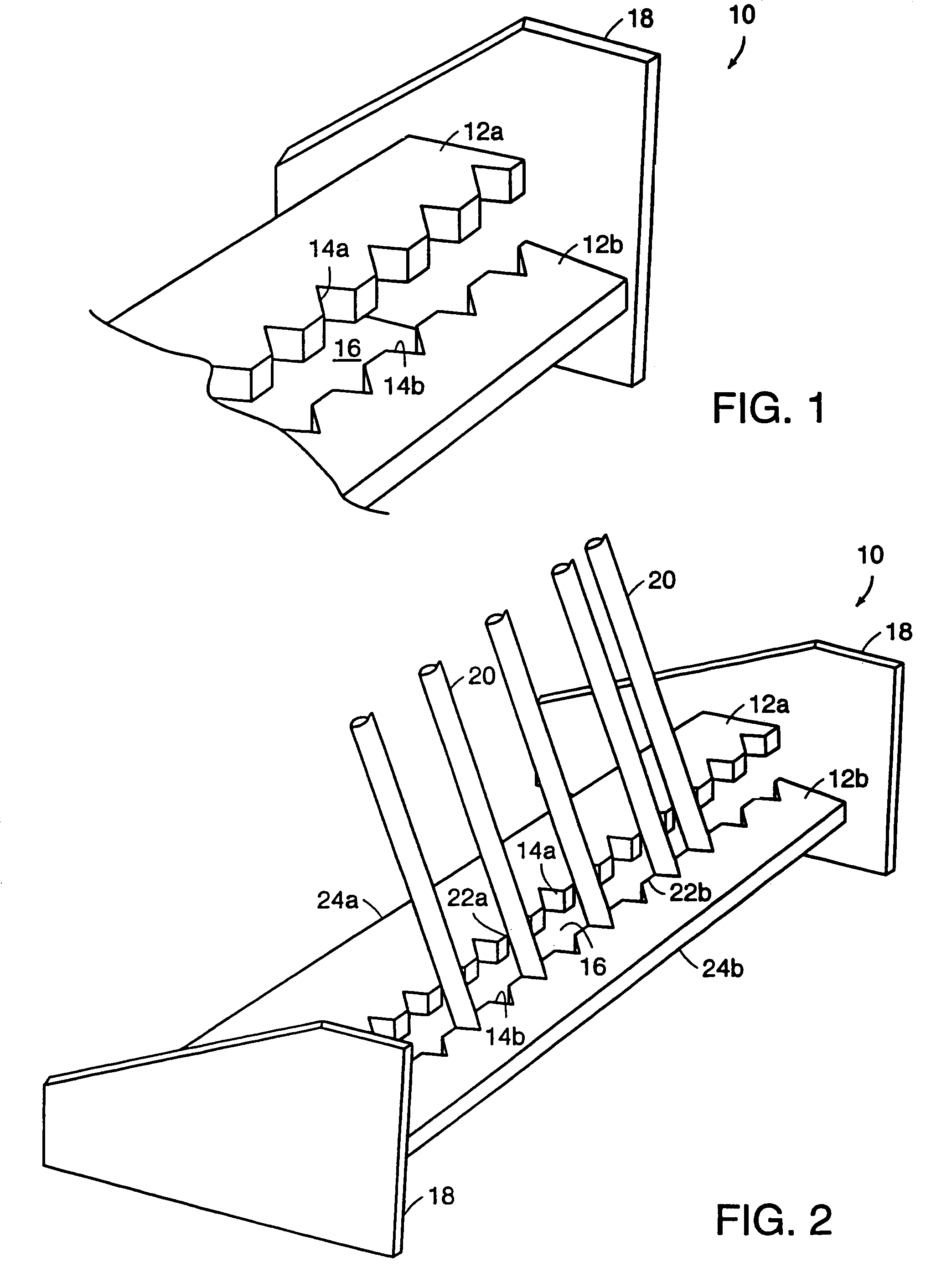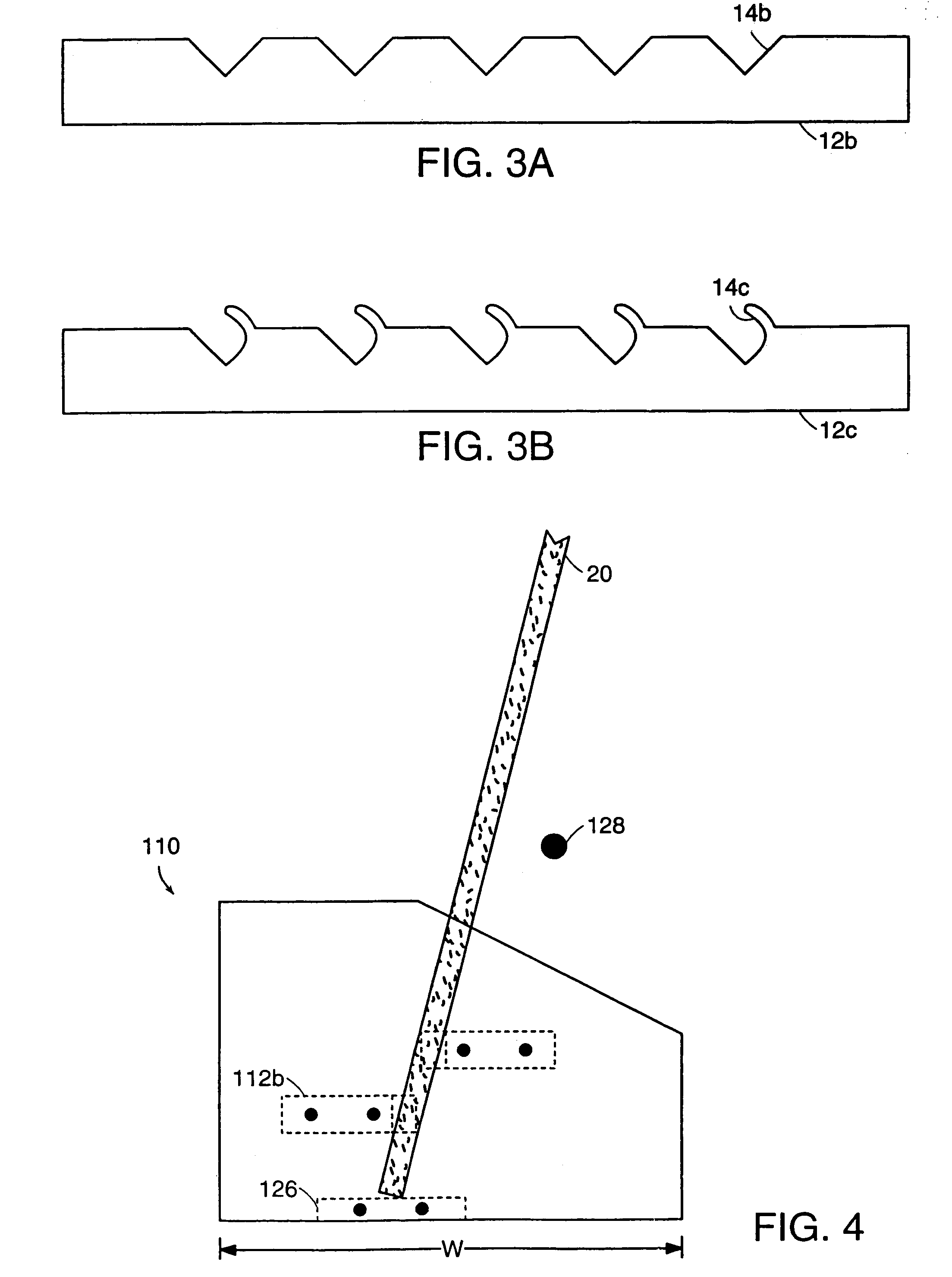Dual rail tool holder
- Summary
- Abstract
- Description
- Claims
- Application Information
AI Technical Summary
Benefits of technology
Problems solved by technology
Method used
Image
Examples
Embodiment Construction
[0030]Embodiments of the present invention are described below. It is, however, expressly noted that the present invention is not limited to these embodiments, but rather the intention is that all equivalents and modifications that are obvious to a person skilled in the art are also included. In particular, the present invention is not intended to be limited to use with garden tools, but rather to use with any article having an elongate member which can be stored in a generally vertical position, such as hockey sticks, fishing poles, pool maintenance equipment, and the like. The term tool, as used herein, includes any article having an elongate member, such as a generally cylindrical handle or a post. The phrases vertical position and vertical orientation, as used herein, refer to the ranges of angle from about zero degrees to about 45 degrees from vertical.
[0031]FIG. 1 shows a partial perspective view of a tool holder 10 according to one embodiment of the present invention. The too...
PUM
 Login to View More
Login to View More Abstract
Description
Claims
Application Information
 Login to View More
Login to View More - R&D
- Intellectual Property
- Life Sciences
- Materials
- Tech Scout
- Unparalleled Data Quality
- Higher Quality Content
- 60% Fewer Hallucinations
Browse by: Latest US Patents, China's latest patents, Technical Efficacy Thesaurus, Application Domain, Technology Topic, Popular Technical Reports.
© 2025 PatSnap. All rights reserved.Legal|Privacy policy|Modern Slavery Act Transparency Statement|Sitemap|About US| Contact US: help@patsnap.com



